In the ever-evolving landscape of commercial kitchen appliances, the contact grill market has seen significant growth, particularly within the realms of OEM (Original Equipment Manufacturer) partnerships. As we delve into the intricacies of this sector, it becomes apparent that the key to success lies in understanding the market dynamics, navigating the challenges, and embracing the opportunities that arise. With a focus on the European and American markets, this exploration aims to shed light on the complexities of the commercial contact grill OEM industry, highlighting the importance of quality, customization, distribution channels, sales strategies, regulatory compliance, and the lessons learned from case studies and success stories. As we look to the future, predictions and an outlook on the industry’s trajectory offer a glimpse into what lies ahead for those involved in the commercial contact grill OEM space.
Understanding the Market Dynamics
In the bustling commercial kitchen landscape, the demand for efficient and reliable cooking equipment is ever-growing. Among these, commercial contact grills have emerged as a staple for various foodservice operations. This segment, often supplied by Original Equipment Manufacturers (OEMs), is experiencing a dynamic evolution shaped by technological advancements, market trends, and regional preferences.
The European market, known for its diverse culinary traditions, has seen a surge in the demand for commercial contact grills that cater to both traditional and modern cooking styles. From gourmet restaurants to fast-food chains, the need for high-quality grills that can handle a variety of cooking methods has become paramount. The OEMs serving this market must understand the nuanced preferences of their European clients, who often seek grills that are not only functional but also efficient in terms of energy use and maintenance.
In the Americas, particularly in the United States and Canada, the commercial contact grill market is driven by a different set of factors. Fast-paced service environments, such as stadiums, airports, and hospitals, require grills that can withstand heavy usage and offer quick cooking times. The OEMs in this region are focused on developing grills that are durable, easy to clean, and capable of producing consistent results under pressure.
One of the key dynamics influencing the commercial contact grill OEM market is the rapid pace of technological innovation. Smart features, such as digital temperature control and wireless connectivity, are becoming increasingly popular. These advancements not only enhance the user experience but also provide valuable data that can help chefs and operators optimize their cooking processes.
Moreover, the rise of health-conscious consumers has led to a growing demand for healthier cooking options. Contact grills, which offer a healthier alternative to deep-frying, are being embraced by foodservice operators looking to offer their customers a variety of nutritious choices. This shift has prompted OEMs to focus on developing grills that can cook a wide range of ingredients with minimal oil, thus appealing to both customers and health regulators.
In terms of market trends, there is a noticeable trend towards sustainability and eco-friendly practices. Commercial contact grill OEMs are responding by producing grills that are energy-efficient and made from recycled materials. This not only aligns with the values of environmentally conscious consumers but also reduces the carbon footprint of foodservice operations.
The competitive landscape of the commercial contact grill OEM market is characterized by a mix of established players and new entrants. Established brands have a strong market presence and a reputation for quality, while newer companies are introducing innovative designs and features that can disrupt the market. This competition drives innovation and often results in better products for the end-user.
However, this dynamic market is not without its challenges. The cost of developing new technologies and maintaining a high standard of quality can be prohibitive for some OEMs. Additionally, regulatory compliance, especially in Europe with its stringent health and safety standards, requires a significant investment in resources and expertise.
Another challenge is the need for OEMs to keep up with the rapid pace of change in the foodservice industry. Operators are constantly seeking new ways to differentiate their offerings, and this often means integrating the latest cooking equipment into their kitchens. OEMs must be agile and responsive to these changes, ensuring that their products not only meet current needs but also anticipate future trends.
Despite these challenges, the outlook for the commercial contact grill OEM market in Europe and the Americas is promising. As the demand for high-quality, efficient, and innovative cooking solutions continues to grow, so too does the opportunity for OEMs to capture a larger share of this dynamic market. By staying attuned to market dynamics, focusing on quality and innovation, and adapting to the changing needs of their customers, OEMs can position themselves for long-term success in this competitive landscape.
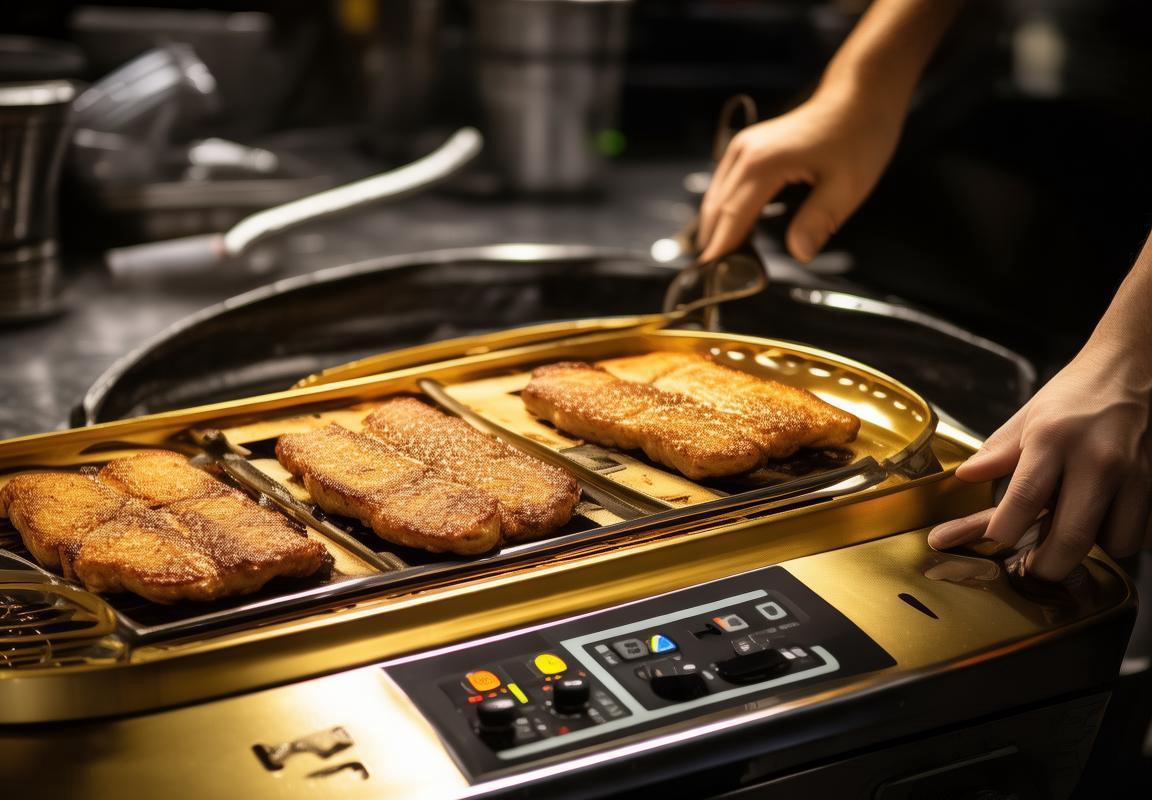
Key Players and Trends
In the competitive landscape of the commercial contact grill OEM market, several key players have emerged as industry leaders, each bringing their unique strengths and innovations to the forefront. These companies not only dominate the market share but also set the pace for technological advancements and design trends.
Innovative Brands Leading the Way
German appliance giant BSH Hausgeräte, for instance, has made a significant impact with their commercial contact grill offerings. Known for their durability and efficiency, their products are often sought after by restaurants and foodservice establishments. Similarly, Electrolux, another Swedish powerhouse, has established itself as a leader in the commercial kitchen equipment sector, including their range of contact grills.
Global Players with Local Expertise
On the other hand, some OEMs are local heavyweights in their respective regions. For example, the U.S.-based Traulsen, known for their commercial refrigeration solutions, has also ventured into the contact grill market with impressive results. In Asia, brands like Hisense and Midea have gained traction, leveraging their local market knowledge to cater to the specific needs of regional consumers.
Technological Evolution and Smart Features
The trend in the commercial contact grill market is unmistakably towards technological innovation. Many OEMs are integrating smart features such as Bluetooth connectivity, remote control capabilities, and data analytics to enhance user experience and operational efficiency. These advancements allow chefs to monitor and adjust grill settings from their smartphones, ensuring consistency in cooking results.
Sustainability and Energy Efficiency
Sustainability has become a crucial factor in the commercial kitchen equipment market, and contact grill OEMs are responding accordingly. There is a growing emphasis on energy-efficient designs that reduce power consumption and minimize environmental impact. Features like heat recovery systems and eco-friendly materials are becoming standard in the latest models.
Customization and Modular Solutions
Customization is another trend gaining momentum. OEMs are offering modular designs that allow for easy integration into various kitchen layouts and configurations. This flexibility is particularly attractive to restaurants with specific menu requirements or limited kitchen space. Tailor-made solutions are not only a competitive edge but also a testament to the adaptability of these companies.
Health and Safety Standards
With health and safety being paramount in the foodservice industry, OEMs are focusing on developing contact grills that adhere to stringent hygiene standards. This includes materials that are easy to clean, non-stick surfaces, and hygienic designs that minimize the risk of foodborne illnesses.
Global Expansion and Market Diversification
As the market for commercial contact grills continues to grow, many OEMs are looking beyond their domestic markets. There’s a clear trend of international expansion, with established brands setting up manufacturing plants and sales offices in emerging markets. This global outreach is driven by the desire to tap into new consumer segments and capitalize on regional culinary trends.
Competitive Pricing Strategies
Competitive pricing remains a vital strategy for OEMs looking to gain market share. Many companies are offering more affordable yet high-quality contact grills to appeal to a broader range of customers. This often involves optimizing production processes and supply chains to reduce costs without compromising on performance.
Collaborations and Partnerships
Collaborations with other industry players are also becoming more common. OEMs are partnering with software developers, foodservice consultants, and even ingredient suppliers to create comprehensive solutions that cater to the entire culinary process. These strategic alliances can lead to groundbreaking innovations and enhanced value propositions for customers.
In conclusion, the commercial contact grill OEM market is characterized by a dynamic mix of global players and regional leaders, all vying for a share of a rapidly growing market. The trends in the industry reflect a commitment to innovation, sustainability, and customer satisfaction, ensuring that the future of commercial contact grills is bright and full of possibilities.

Market Segmentation and Applications
In the commercial contact grill OEM landscape, market segmentation and applications play a pivotal role in shaping the industry’s direction. From high-end restaurants to industrial catering, understanding these segments is crucial for OEMs looking to tailor their products to specific needs.
Restaurants and Hospitality SectorThe restaurant and hospitality sector is a major consumer of commercial contact grills. These establishments require grills that can handle high volumes and withstand the rigors of daily use. Trends in this segment include a growing demand for energy-efficient models, as well as those with advanced cooking capabilities such as variable heat settings and non-stick surfaces. Health-conscious consumers are also pushing for grills that can reduce oil usage, leading to an increase in popularity for steam-assisted cooking technology.
Industrial and Institutional CateringIndustrial and institutional catering, including schools, hospitals, and large events, requires commercial contact grills that can handle large batches and are built for durability. These applications often demand grills with larger cooking surfaces and more robust controls. The trend here is towards modular designs that allow for easy cleaning and maintenance, as well as grills that can integrate with other kitchen equipment, such as ovens and fryers. Additionally, there’s a focus on grills that can be easily scaled up or down to accommodate varying service sizes.
Retail and Food Service OutletsRetail and food service outlets, such as supermarkets and convenience stores, are increasingly incorporating commercial contact grills into their product offerings. These grills are used for everything from making sandwiches to preparing fresh meals for on-the-go customers. The key here is portability and ease of use. There’s a trend towards compact, countertop models that can be quickly deployed and easily cleaned, as well as grills that offer a variety of cooking options to cater to diverse customer preferences.
Healthcare and Residential Care FacilitiesHealthcare facilities and residential care homes are using commercial contact grills to provide nutritious and appetizing meals for their patients and residents. These settings often require grills that are easy to clean and maintain, with features that ensure food safety and hygiene. There’s a growing interest in grills that can be operated by staff with varying levels of culinary expertise, as well as those that offer programmable cooking modes to ensure consistency and quality.
Catering and Event ServicesCatering and event services require commercial contact grills that can handle a range of food types and cooking methods. These grills must be portable, durable, and capable of withstanding the demands of temporary or outdoor settings. The trend in this segment is towards grills that are lightweight yet robust, with features like foldable legs and built-in wheels for easy transport. Additionally, there’s an increasing demand for grills that can produce a variety of cooking styles, from searing to steaming, to meet the diverse needs of event attendees.
Sports and Recreational FacilitiesSports and recreational facilities, including gyms and campgrounds, are also incorporating commercial contact grills into their facilities. These grills are used for quick meals and snacks, often in outdoor settings where traditional cooking options are limited. The key features here include weather resistance and ease of use. There’s a trend towards grills that can be easily stored and set up, as well as those that offer versatile cooking options to cater to a range of dietary preferences.
Educational InstitutionsEducational institutions, such as culinary schools and colleges, are using commercial contact grills to teach students about different cooking techniques and equipment. These grills must be capable of demonstrating a wide range of cooking methods and are often selected for their durability and versatility. The trend in this segment is towards grills that are designed with educational purposes in mind, featuring clear cooking charts, adjustable heat settings, and user-friendly controls.
The market for commercial contact grills is diverse, with each segment presenting unique challenges and opportunities. OEMs that can understand and cater to these specific needs are likely to find success in a highly competitive market. By focusing on innovation, customization, and quality, OEMs can position themselves to capture the attention of a wide range of customers across various industries.
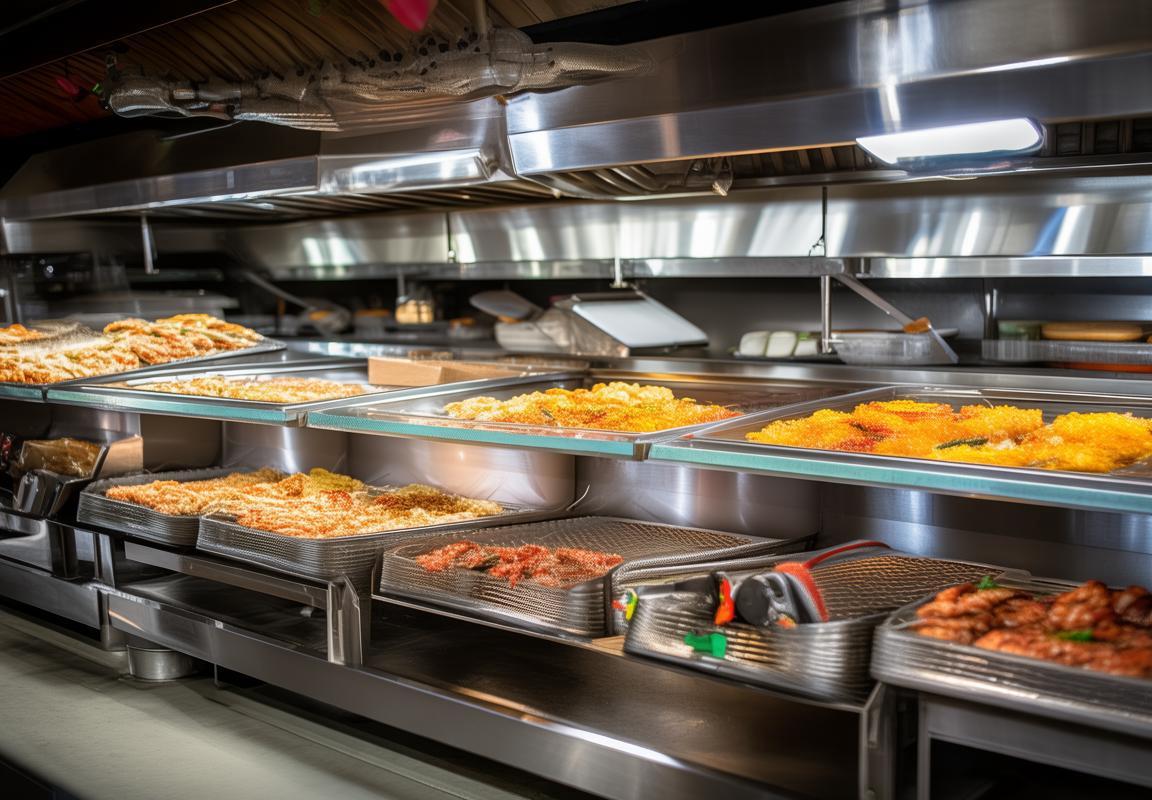
OEM Challenges and Opportunities
Navigating the complexities of the OEM (Original Equipment Manufacturer) market for commercial contact grills can be both challenging and rewarding. Here’s an in-depth look at some of the key hurdles and potential opportunities within this niche:
The Complexity of Supply Chain ManagementManaging a supply chain for commercial contact grills is no small feat. OEMs must coordinate with a myriad of suppliers to ensure the timely delivery of high-quality components. The challenge lies in balancing cost-effectiveness with the need for reliable and consistent parts. For instance, sourcing parts from different regions may offer price advantages but could lead to logistical nightmares if there are delays or quality issues.
Meeting Diverse Industry RegulationsEach market, whether in Europe or the Americas, has its own set of regulations governing commercial kitchen equipment. From electrical safety standards to emission controls, OEMs must stay abreast of these laws to avoid costly penalties and maintain certifications. Adapting to these regulations requires a deep understanding of local markets and a willingness to invest in compliance.
Innovation vs. Market DemandOEMs are constantly under pressure to innovate their product lines. However, not all innovations align with market demand. Balancing the push for new features with the need to meet the specific requirements of various customers can be difficult. For example, while some clients may seek advanced temperature control systems, others might prioritize durability and ease of use.
Quality Control Amidst Rapid ProductionMaintaining quality in high-volume production is a challenge. The scale of operations often means that even a small defect rate can translate into a significant number of faulty units. Implementing robust quality control measures is crucial, but it can also add complexity and cost to the production process. OEMs must find the right balance between efficiency and the integrity of their product.
Customization vs. StandardizationOffering customization to clients can be a powerful differentiator, but it also presents unique challenges. Tailoring products to meet specific customer needs can lead to increased lead times and higher costs. Conversely, standardizing products to streamline production may sacrifice the competitive edge of offering unique solutions. OEMs must decide where to draw the line between customization and mass production.
Evolving Technological LandscapeThe rapid pace of technological advancement can be both a threat and an opportunity for OEMs. On one hand, staying ahead of the curve requires significant investment in research and development. On the other hand, being slow to adapt to new technologies can leave a company at a competitive disadvantage. Balancing innovation with operational capabilities is a delicate dance.
Globalization’s Impact on SourcingWith the rise of globalization, OEMs have access to a broader range of suppliers worldwide. While this can lead to cost savings and increased quality options, it also introduces complexities. Language barriers, cultural differences, and political instability can all impact the reliability of international supply chains. Managing these global relationships effectively is critical for success.
Customer Expectations and ServiceThe expectations of customers in the commercial contact grill market are ever-evolving. Today’s businesses seek not just reliable equipment but also exceptional service and support. This means that OEMs must be prepared to offer comprehensive after-sales services, including maintenance, repairs, and training. Meeting these expectations can be a challenge but also an opportunity to build long-term customer relationships.
Environmental and Social ResponsibilityIn recent years, there has been a growing emphasis on environmental and social responsibility. OEMs must consider the sustainability of their products and operations, which can involve everything from sourcing eco-friendly materials to reducing carbon footprints. This shift in focus is not just about compliance; it’s an opportunity to position the brand as a leader in corporate social responsibility.
The Financial Aspects of GrowthAs OEMs look to expand their market share, financial considerations play a significant role. Investing in new equipment, technology, and marketing campaigns can be risky. Balancing the need for growth with financial prudence is a challenge that requires careful planning and execution.
In conclusion, the OEM market for commercial contact grills is fraught with challenges that require strategic navigation. However, with a keen eye on market trends, a commitment to quality, and a willingness to adapt, there are numerous opportunities for growth and innovation. By understanding and addressing these complexities, OEMs can not only survive but thrive in this dynamic industry.

The Importance of Quality and Customization
In the competitive landscape of the commercial contact grill OEM market, the emphasis on quality and customization has become a cornerstone for success. Here’s how these factors are shaping the industry:
The demand for high-quality commercial contact grills is driven by the expectation of consistent performance and durability. Customers seek products that can withstand the rigors of commercial kitchens, where heavy usage and harsh conditions are the norm. This means that OEMs must prioritize materials and construction that ensure reliability over time.
Customization has evolved beyond simple branding; it now includes tailored features that cater to specific market needs. For instance, grills designed for high-volume fast-food chains may require quick heat-up times and easy-to-clean surfaces, while those for gourmet restaurants might emphasize precise temperature control and unique cooking surfaces.
Quality is not just about the materials used but also about the craftsmanship and attention to detail. Grills that are assembled with precision and undergo rigorous quality control checks are less likely to malfunction, reducing downtime and costly repairs for businesses.
The rise of smart kitchen technology has brought about a new wave of customization, where grills can be equipped with digital interfaces and connectivity features. This not only allows for better control and monitoring but also opens up opportunities for OEMs to offer predictive maintenance services, which can significantly reduce maintenance costs for customers.
In the foodservice industry, where health and safety are paramount, the quality of commercial contact grills is scrutinized. High-quality grills often meet stringent hygiene standards, which is crucial for preventing cross-contamination and ensuring food safety.
Customization also plays a vital role in the lifecycle of a commercial contact grill. As customer preferences shift, OEMs that offer flexible design options can adapt their products to meet new trends. For example, a grill that can be easily modified to include a griddle or a searing surface can cater to a broader range of culinary needs.
Moreover, the importance of quality and customization is not limited to the end product; it extends to the supply chain and customer service. OEMs that can provide high-quality components and efficient service after the sale build a reputation for reliability, which is invaluable in maintaining long-term customer relationships.
In a market where differentiation is key, the ability to offer a high-quality, customizable product can set an OEM apart from competitors. It allows businesses to not only meet but exceed customer expectations, fostering loyalty and repeat business.
The integration of quality and customization also impacts the bottom line. While it may require a higher initial investment, the long-term savings from reduced maintenance, lower repair costs, and increased customer satisfaction can outweigh these expenses.
As the industry continues to evolve, the role of quality and customization will only grow. OEMs that understand the importance of these factors and invest in them will be better positioned to adapt to changing market demands and maintain a competitive edge. Whether it’s through innovative design, advanced materials, or exceptional customer service, the focus on quality and customization is a strategic imperative for success in the commercial contact grill OEM market.
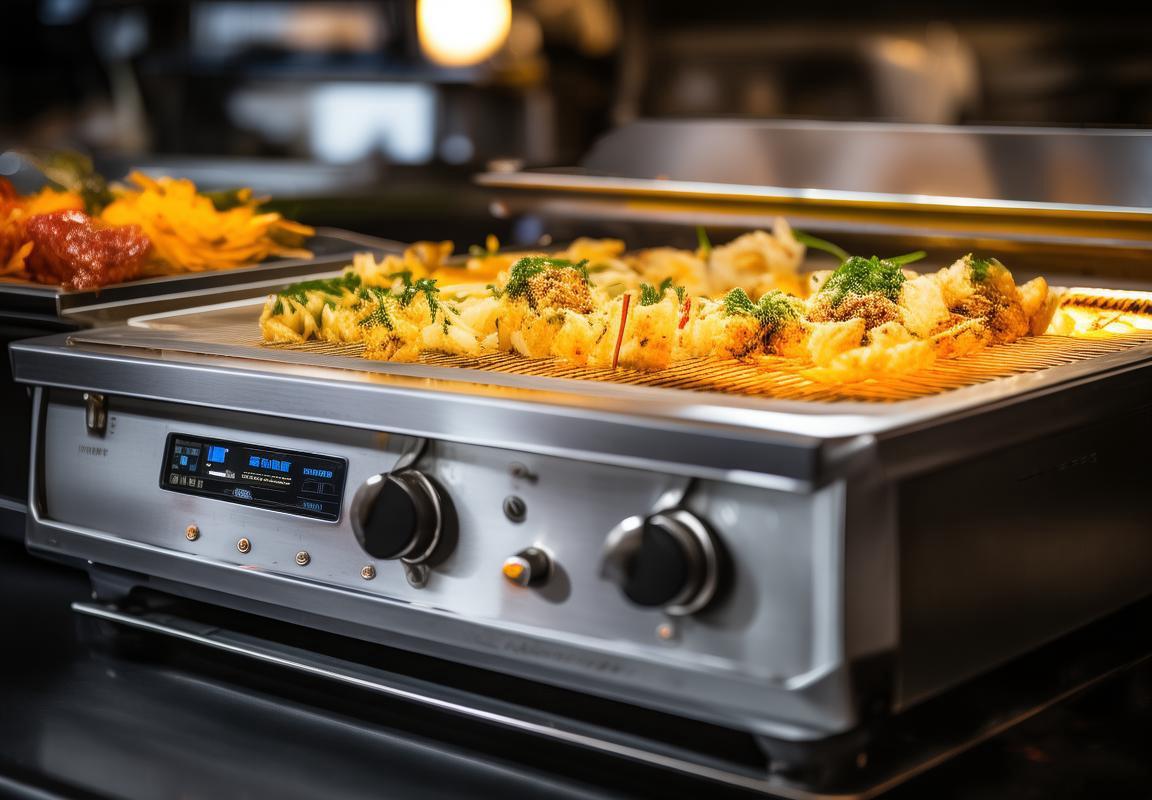
Distribution Channels and Sales Strategies
Navigating the complex landscape of distribution channels and sales strategies is crucial for OEMs in the commercial contact grill market. These aspects not only determine the reach and visibility of products but also significantly impact customer satisfaction and overall business success.
The rise of e-commerce has transformed the way products are distributed, offering OEMs new avenues for direct-to-consumer sales. Online platforms have become a staple for reaching a broader audience, providing convenience and a wealth of information at the fingertips of potential buyers. However, balancing this with traditional retail channels is key, as some consumers still prefer the tactile experience of shopping in-store.
Social media has emerged as a powerful tool for both brand building and sales. OEMs are leveraging platforms like Instagram and Facebook to showcase their products through engaging content, influencer partnerships, and targeted ads. This not only increases brand awareness but also drives traffic to various sales channels, both online and offline.
Direct sales to commercial establishments, such as restaurants, hotels, and catering services, remain a cornerstone of the distribution strategy. Building strong relationships with these businesses is essential, as they often require personalized service and product support. OEMs must tailor their sales approaches to the specific needs of each client, whether it’s through a dedicated sales representative or a specialized support team.
Wholesale distribution plays a significant role in the commercial contact grill market. Distributors act as intermediaries, bridging the gap between manufacturers and a wide network of retailers and end-users. They offer the scale and efficiency that can be challenging for individual OEMs to achieve. However, OEMs must carefully select their distributors, ensuring they share similar values and a commitment to quality.
The importance of trade shows and industry events cannot be overstated. These gatherings are a goldmine for networking, showcasing products, and understanding market trends. OEMs often use these events to demonstrate the capabilities of their commercial contact grills, forge new partnerships, and secure orders from key customers. The strategy here involves not just displaying products effectively but also engaging in meaningful conversations and offering hands-on demonstrations.
In the age of digital transformation, the role of data analytics in sales strategies cannot be ignored. OEMs are using data to gain insights into consumer behavior, preferences, and purchasing patterns. This information is then used to refine marketing campaigns, optimize inventory management, and personalize the sales process. For instance, targeted email marketing campaigns can be crafted based on the browsing history of potential customers.
The importance of customer service in the sales process is paramount. OEMs that invest in exceptional customer service can build a loyal customer base and foster word-of-mouth referrals. This includes everything from responsive customer support to post-sales service and maintenance. Offering training programs for end-users on how to use and maintain the commercial contact grills effectively can also enhance customer satisfaction and retention.
Sales strategies must also consider the global nature of the market. For OEMs looking to expand internationally, understanding local regulations, cultural nuances, and business practices is crucial. This might involve adapting product specifications, sales materials, and even the sales approach to align with local market expectations.
Lastly, the sustainability movement has influenced sales strategies in the commercial contact grill industry. OEMs that emphasize eco-friendly practices and sustainable materials in their products are likely to attract environmentally conscious consumers and businesses. This can be reflected in sales strategies through green marketing campaigns and partnerships with organizations promoting sustainability.
In conclusion, the distribution channels and sales strategies employed by OEMs in the commercial contact grill market are diverse and multifaceted. Balancing e-commerce with traditional channels, leveraging social media, building strong relationships with commercial establishments, and utilizing data analytics are just a few of the tactics that can lead to successful sales and business growth. It’s a dynamic landscape that requires constant adaptation and innovation to stay ahead.
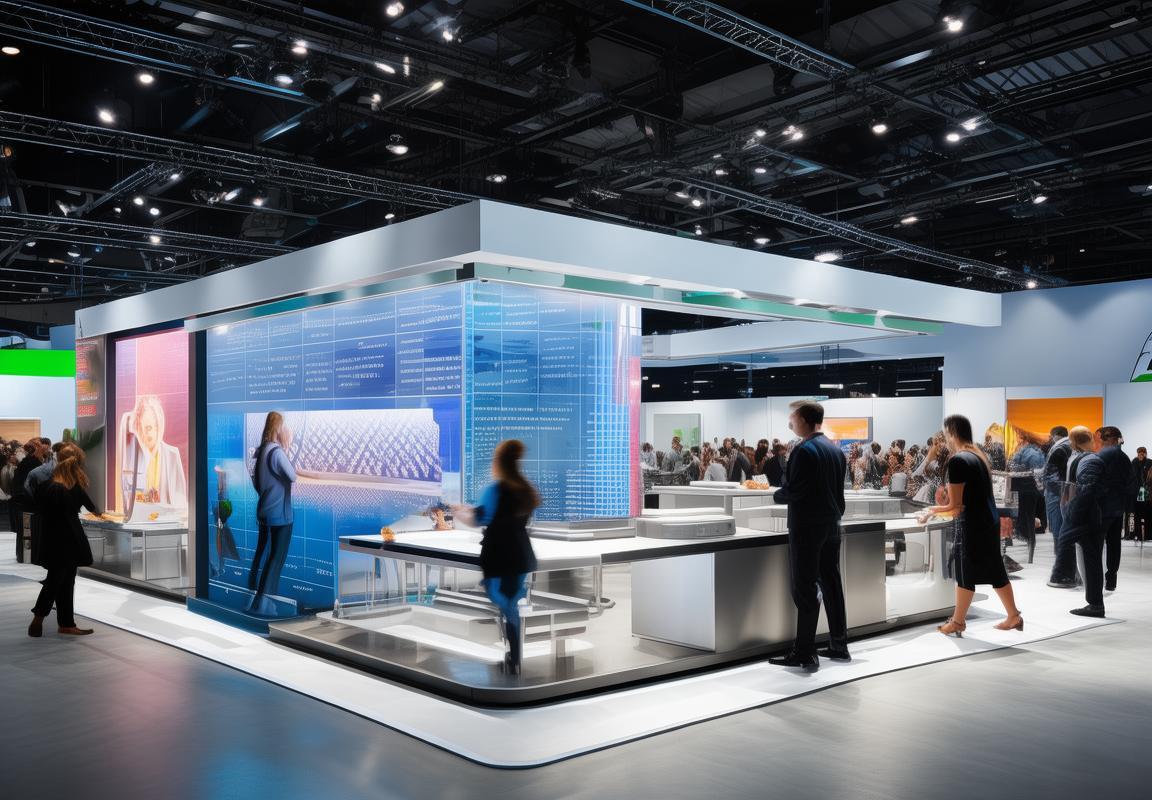
Regulatory Environment and Compliance
Understanding the complexities of regulatory frameworks and ensuring compliance is a critical aspect for companies operating in the commercial contact grill OEM market, especially in Europe and the Americas. Here’s an exploration of the regulatory environment and the importance of compliance:
The European Union’s strict regulations have been a cornerstone of the commercial contact grill industry. From safety standards to environmental regulations, these laws are designed to protect consumers and the environment. Compliance with these regulations can be a challenge, but it also opens doors to a vast market with stringent quality expectations.
One of the key regulatory frameworks is the General Product Safety Directive (GPSD), which requires that all products placed on the market are safe for the intended use. This directive affects the design, manufacturing, and labeling of commercial contact grills, ensuring that they meet specific safety criteria.
In the United States, the Food and Drug Administration (FDA) plays a crucial role in regulating foodservice equipment, including commercial contact grills. The FDA’s standards focus on the grill’s ability to prevent foodborne illness and ensure that the materials used in the grill are safe for food contact. Compliance with FDA regulations is essential for OEMs looking to enter or expand in the American market.
Environmental regulations, such as the Restriction of Hazardous Substances (RoHS) directive in Europe and the Energy Policy Act in the U.S., also impact the commercial contact grill industry. These regulations limit the use of certain hazardous substances and promote energy efficiency, compelling OEMs to design and produce grills that are both environmentally friendly and compliant with these laws.
The complexity of these regulations is compounded by the fact that they are subject to change. OEMs must stay informed about updates and amendments to ensure ongoing compliance. This requires a dedicated team or a third-party consultant who specializes in regulatory affairs.
Compliance also involves adhering to local regulations in each country where the grills are sold. This can mean navigating different safety standards, labeling requirements, and even cultural preferences. For example, some markets may require additional certifications or endorsements from local authorities.
One of the significant challenges in compliance is the cost. Ensuring that products meet all necessary regulations can be expensive, especially for small or medium-sized enterprises. This includes the costs of certifications, quality control measures, and potentially redesigning products to meet new standards.
Despite these challenges, there are opportunities for OEMs that excel in compliance. A strong track record of regulatory compliance can be a significant competitive advantage. It can build trust with customers, partners, and regulatory bodies alike. Customers are more likely to purchase from a company that demonstrates a commitment to safety and environmental responsibility.
Moreover, compliance can lead to innovation. When OEMs are required to meet new standards, they often develop new technologies and designs that can set them apart from competitors. This can open up new markets and opportunities for growth.
In the realm of international trade, compliance with regulations like the International Electrotechnical Commission (IEC) standards is crucial. These standards ensure that products are compatible across different countries and regions, making it easier for OEMs to export their products globally.
Another opportunity lies in the certification process itself. Obtaining certifications such as CE marking in Europe or UL listing in the U.S. can be a marketing tool. These certifications serve as a quality seal, indicating to customers that the product has been thoroughly tested and meets specific requirements.
In conclusion, the regulatory environment and the need for compliance in the commercial contact grill OEM market are multifaceted. While they present challenges, they also offer opportunities for differentiation, innovation, and market expansion. By staying informed, investing in compliance, and leveraging certifications, OEMs can navigate the regulatory landscape effectively and position themselves for long-term success.
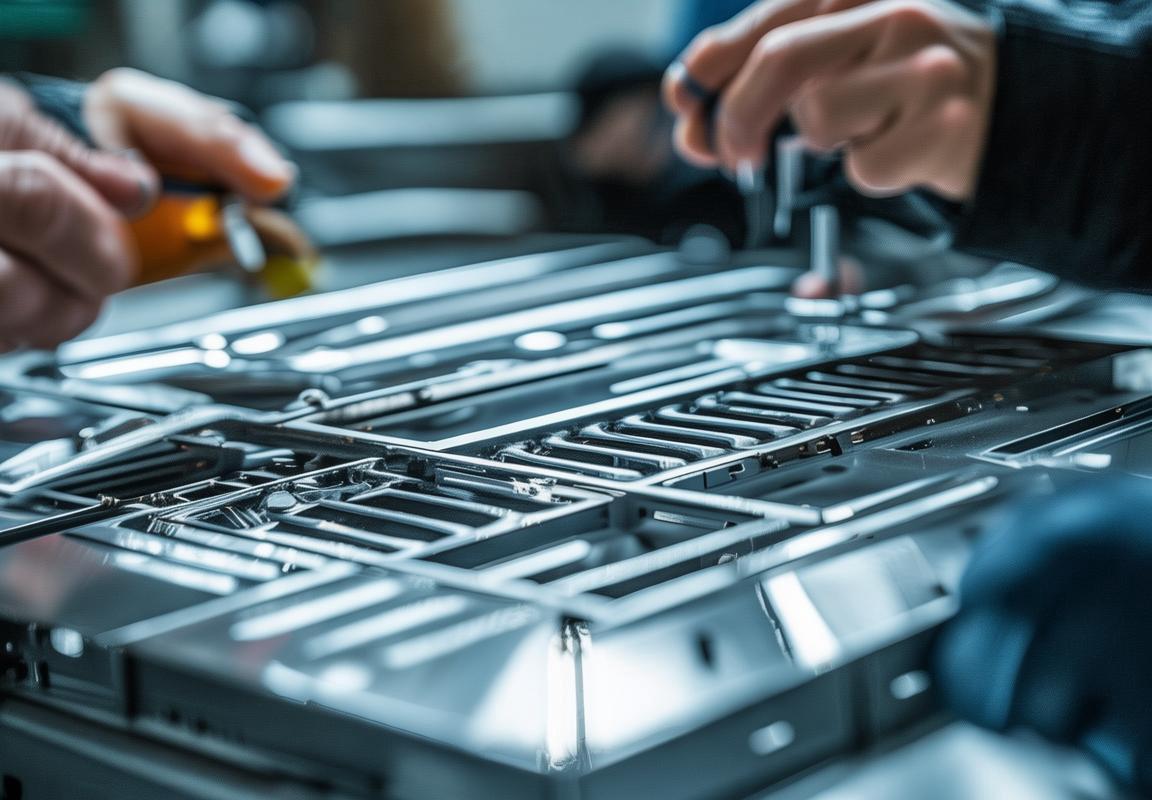
Case Studies and Success Stories
In the commercial contact grill OEM sector, several case studies and success stories stand out as testament to the resilience and innovation of the industry. From overcoming market challenges to embracing technological advancements, these narratives offer valuable insights into what it takes to thrive in this dynamic field.
A Story of Adaptation: One OEM faced a sudden shift in consumer preferences towards healthier cooking methods. They responded by retooling their production lines to include healthier options, such as contact grills with adjustable temperature controls. This quick adaptation not only maintained their market share but also opened new avenues for growth in the health-conscious market segment.
The Power of Partnerships: A successful OEM partnered with a local restaurant chain to develop a customized contact grill that met the specific needs of the chain’s menu. The collaboration led to a unique product that was both efficient and tailored to the restaurant’s branding, resulting in a win-win situation for both parties.
Breaking into New Markets: An emerging OEM faced the challenge of entering a new geographical market where regulations and consumer expectations were vastly different from their home market. By thoroughly researching local standards and consumer preferences, the OEM was able to modify their product line to comply with these new requirements, ultimately securing a significant market share in the new territory.
Embracing Sustainability: A leading contact grill OEM recognized the growing demand for sustainable products and decided to invest in eco-friendly materials and manufacturing processes. This commitment not only helped them appeal to environmentally conscious consumers but also reduced their carbon footprint, leading to increased brand loyalty and market credibility.
Innovative Marketing Strategies: An OEM struggling to gain traction in a crowded market turned to innovative marketing strategies. They developed a series of viral social media campaigns that showcased the versatility and ease of use of their contact grills. These campaigns not only raised brand awareness but also generated a strong following, leading to increased sales and a stronger market position.
Customer-Centric Product Development: An OEM focused on customer feedback and developed a line of contact grills that were not only high-quality but also incredibly user-friendly. By investing in user experience and incorporating features based on customer suggestions, the OEM saw a significant boost in customer satisfaction and repeat business.
Cross-Industry Collaborations: An OEM that specialized in commercial contact grills ventured into cross-industry collaborations, partnering with appliance manufacturers to integrate their grills into larger kitchen solutions. This strategic move not only expanded their product offerings but also positioned them as a leader in comprehensive kitchen equipment solutions.
The Importance of Continuous Improvement: An OEM that had been in the market for several years faced the challenge of maintaining relevance. To address this, they implemented a continuous improvement program that involved regular product updates and enhancements based on the latest technology and consumer trends. This commitment to innovation kept them ahead of the curve and ensured long-term success.
These case studies and success stories highlight the diverse strategies and approaches that have worked in the commercial contact grill OEM sector. They underscore the importance of adaptability, innovation, customer focus, and strategic partnerships in navigating the complexities of the market.
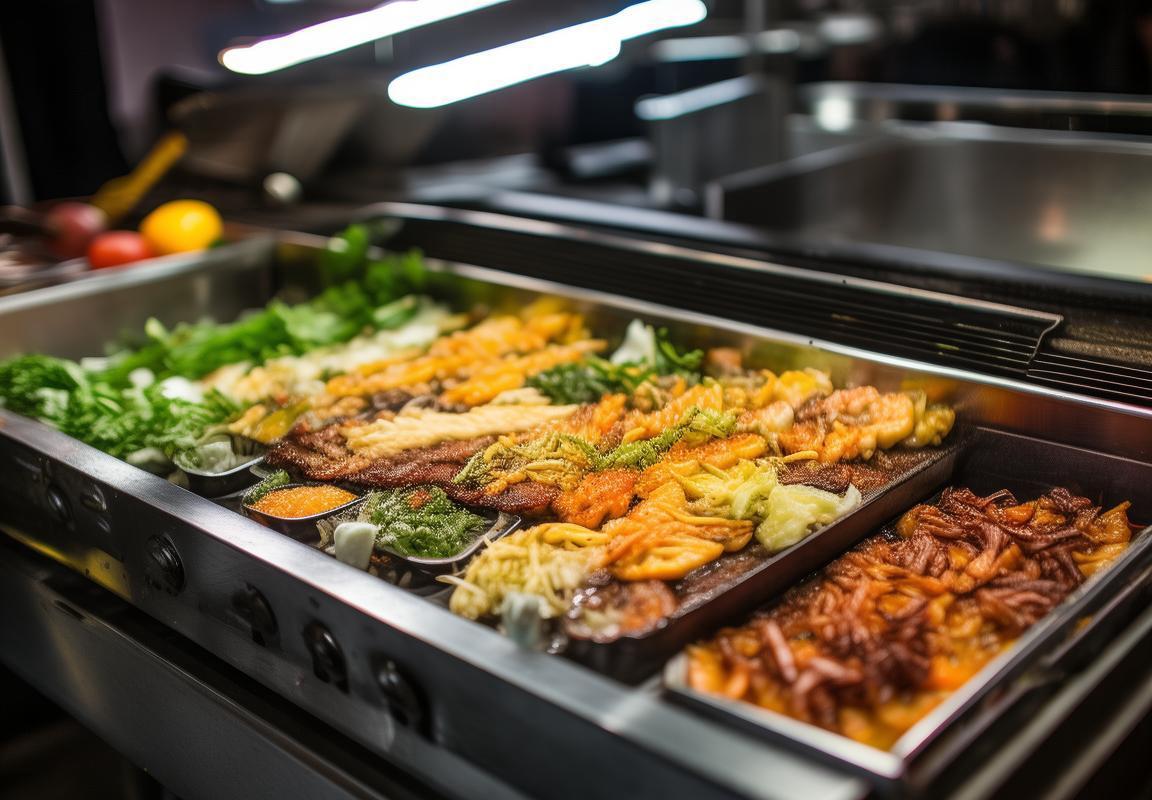
Future Outlook and Predictions
In the ever-evolving landscape of the commercial contact grill OEM market, the future holds a blend of opportunities and challenges. As we look ahead, several key trends and predictions are shaping the industry’s trajectory.
The integration of smart technology is expected to become more prevalent, with grills becoming part of the Internet of Things (IoT). This connectivity will not only enhance user experience but also open up new avenues for data-driven insights and predictive maintenance.
Energy efficiency remains a critical factor, with an increasing focus on sustainable practices. As consumers and businesses alike become more environmentally conscious, OEMs that prioritize energy-saving designs will likely gain a competitive edge.
Market expansion into emerging regions is a significant opportunity. Countries with growing economies and a rising middle class are expected to see a surge in demand for commercial cooking equipment, including contact grills.
The rise of health-conscious consumers is driving a demand for healthier cooking options. Contact grills, which offer a healthier alternative to traditional frying methods, are poised to benefit from this trend, especially in fast-casual and full-service restaurants.
Regulatory compliance continues to be a challenge, with strict standards for food safety and emissions. OEMs that can navigate these requirements effectively will be well-positioned to enter new markets and retain existing ones.
Collaborations and partnerships are becoming more common as OEMs seek to leverage each other’s strengths. By combining resources and expertise, companies can innovate more rapidly and respond to market changes more effectively.
Customization is another area where OEMs are expected to see growth. As customers seek unique solutions to meet their specific needs, the ability to offer tailored products will become increasingly valuable.
The impact of e-commerce cannot be overstated. Online sales platforms are changing how products are distributed and purchased, and OEMs that adapt to this new landscape will find it easier to reach a wider audience.
The rise of subscription models in the commercial kitchen equipment sector is a trend that is likely to continue. This approach allows businesses to access the latest equipment without the upfront cost of purchasing, making it an attractive option for startups and businesses with fluctuating needs.
As the industry evolves, the importance of innovation and continuous improvement cannot be emphasized enough. Companies that invest in research and development will be better equipped to stay ahead of the curve and meet the changing demands of the market.
In conclusion, the future of the commercial contact grill OEM market is bright, with a multitude of opportunities on the horizon. However, it is also fraught with challenges that require strategic planning and adaptability. Those companies that can balance innovation, compliance, and market responsiveness will be well-positioned to thrive in this dynamic industry.
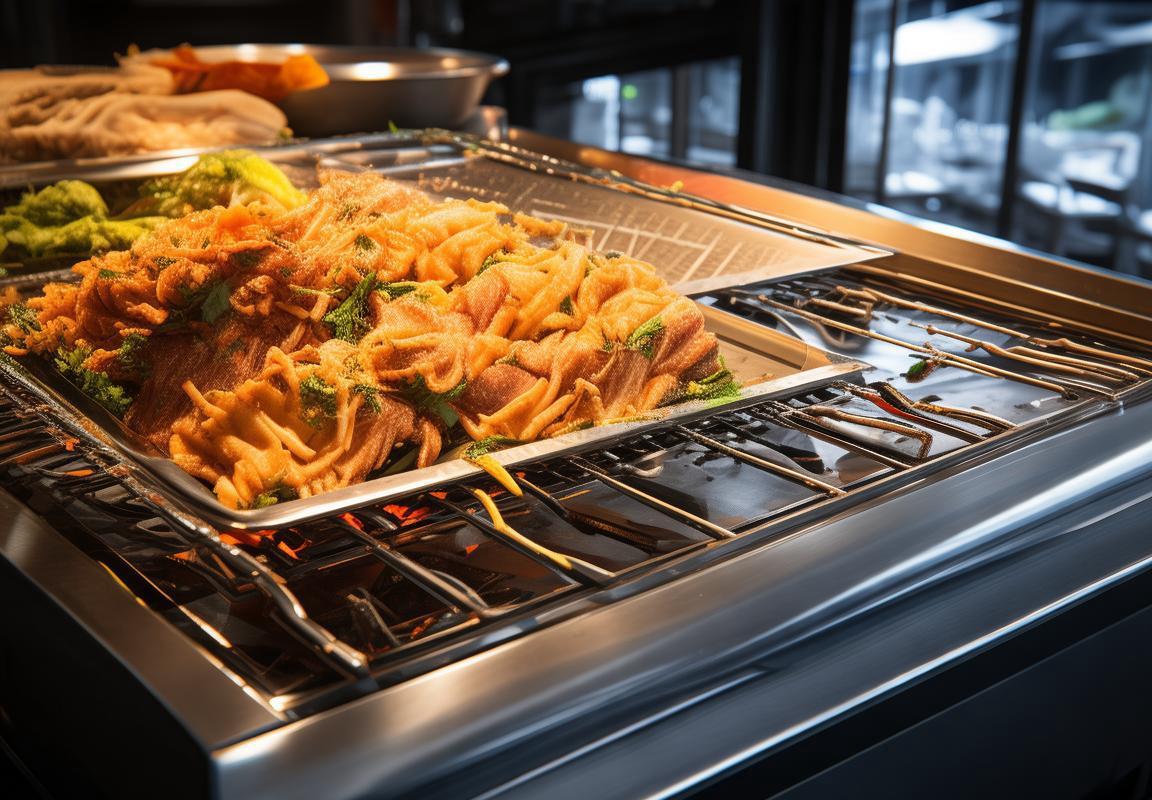
Conclusion
Navigating the complexities of the commercial contact grill OEM landscape requires a keen understanding of the nuances that drive this dynamic market. The industry’s trajectory is marked by a blend of technological advancements, shifting consumer preferences, and evolving regulatory frameworks. As we delve into the specifics, it becomes evident that the future of commercial contact grills is poised for exciting developments, each bringing its own set of challenges and opportunities.
For instance, the push towards sustainability has spurred innovation in energy-efficient appliances, influencing the design and production processes of commercial contact grills. This shift not only resonates with environmentally conscious consumers but also offers a competitive edge for OEMs that can adapt and integrate these eco-friendly features into their products.
On the regulatory front, compliance with safety and health standards remains paramount. The strict adherence to these regulations is not just about meeting legal requirements; it’s about building trust with customers who prioritize safety above all. OEMs that can demonstrate a strong commitment to these standards are likely to see a positive impact on their brand reputation and market share.
Moreover, the integration of smart technology in commercial contact grills is a trend that is here to stay. The ability to remotely control and monitor these appliances not only enhances convenience for operators but also opens up new avenues for data analytics and predictive maintenance. As technology continues to evolve, so too will the capabilities of these grills, potentially changing the way foodservice professionals think about commercial kitchen equipment.
In the realm of customization, the demand for tailored solutions is on the rise. Operators are looking for equipment that not only fits their specific needs but also aligns with their brand identity. This trend is creating a new segment of the market for OEMs, who are now expected to offer a range of options and configurations. The ability to deliver customized products swiftly and efficiently can set one OEM apart from another in a highly competitive landscape.
Distribution channels also play a crucial role in the success of commercial contact grill OEMs. Traditional sales methods are being complemented by online platforms, direct-to-consumer models, and even partnerships with e-commerce giants. Each channel has its own set of advantages and challenges, and OEMs must carefully navigate this complex web to reach their target market effectively.
Sales strategies, too, are evolving. The focus is shifting from sheer product sales to building long-term relationships with clients. This means investing in customer service, offering after-sales support, and engaging in ongoing dialogue about product improvements and new features. The goal is to become a trusted advisor to operators, rather than just a vendor of kitchen equipment.
As we reflect on the regulatory environment and compliance, it’s clear that staying informed about changes in regulations is a full-time job. However, for those who do, the rewards are substantial. Compliance can be a significant differentiator, especially in markets where safety and health are top priorities. It’s not just about avoiding penalties; it’s about becoming a brand that customers can rely on for quality and reliability.
Looking at case studies and success stories, we see a variety of approaches that have led to triumph in this industry. From startups that disrupted the market with a novel product to established brands that leveraged their expertise to enter new markets, each story offers valuable lessons. It’s the willingness to innovate, the ability to adapt, and the dedication to customer satisfaction that have become hallmarks of successful OEMs.
When considering the future outlook and predictions, it’s hard to ignore the growing trend of health-conscious consumers. As the demand for healthier eating options increases, commercial contact grills that can accommodate a wide range of cooking techniques and healthier ingredients will be in high demand. This presents a significant opportunity for OEMs to expand their product lines and cater to this evolving market.
In conclusion, the commercial contact grill OEM landscape is a multifaceted industry that requires a strategic approach. From embracing sustainability and smart technology to mastering customization and distribution, OEMs must navigate a complex terrain to succeed. Compliance with regulations and a deep understanding of customer needs are non-negotiables. As we look ahead, the potential for growth and innovation is vast, and those who can adapt to these changes and seize the opportunities will undoubtedly thrive.